I attended a fantastic concert on Saturday, February 11th, at Koerner Hall in Toronto, featuring Hélène Grimaud on piano.
It was my second concert in Toronto♪, and I was particularly excited because it showcased the highly acclaimed pianist, Hélène Grimaud.
As I entered the venue, I was greeted by a delightful surprise – a mini recital by a soprano singer was taking place in the lobby while we waited for the main doors to open! I’ve never managed to catch such a pre-show performance before, so it felt like an unexpected luxury.
▼Just a 5-minute walk from TTC St George subway station, with cloakroom service at $4
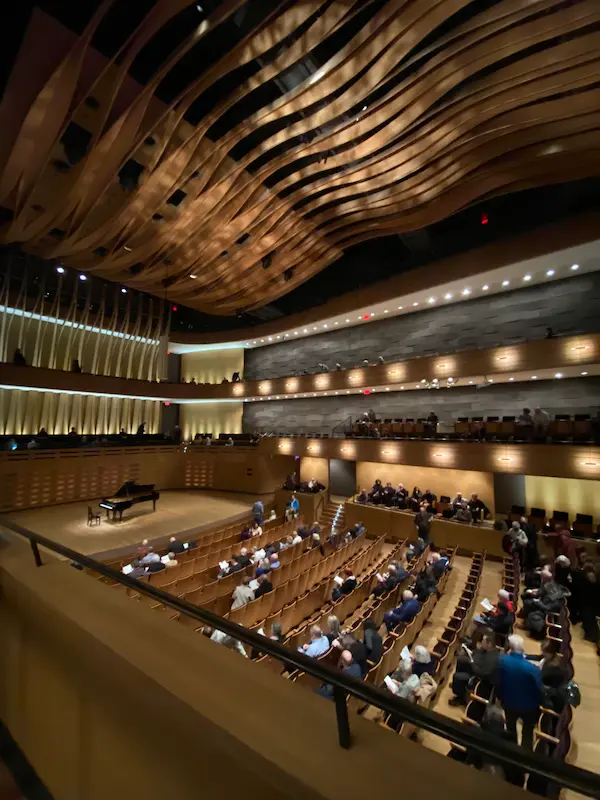

▼Everywhere you go in Canada, it seems you’ll find Gould’s name
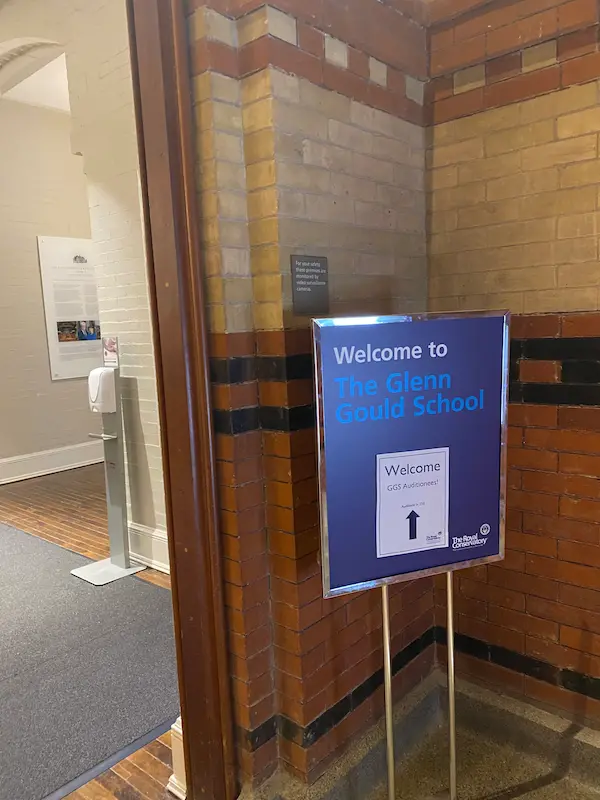
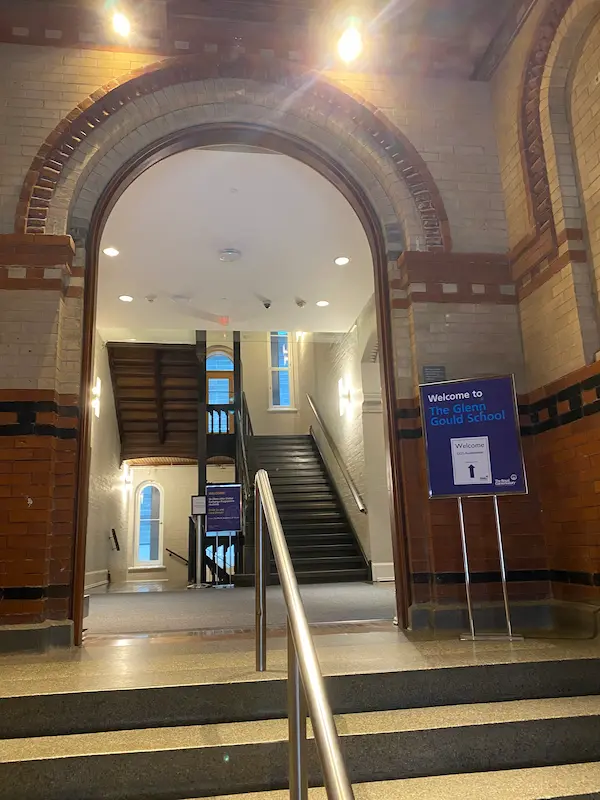
▼Maestro Liszt and Bartók


- Hélène Grimaud
- Program/Ticket Information
- Beethoven: Piano Sonata No. 30 in E Major, op. 109
- Brahms: Three Intermezzi for Piano, op. 117
- Brahms: 7 Fantasien, op. 116
- J.S. Bach: Chaconne from Partita No. 2 for Violin in D Minor, BWV 1004 (arr. Busoni)
- Encore
- What a captivating experience! Stay tuned for more updates on my musical adventures in Toronto♪
Hélène Grimaud
Hélène Grimaud, originating from France, is a pianist whose talents have been evident since her childhood. Born in 1969, she showcased her musical abilities early on and was admitted into the prestigious Paris Conservatoire at the tender age of 13. Since then, she has carved out a distinctive place for herself in the classical music world with her exceptional skill, profound musicality, and unique interpretations.
Grimaud’s repertoire is diverse, yet recordings of her native French compositions are relatively scarce, with Johannes Brahms’ compositions standing out as particularly impressive.
Her performances of Brahms are noted for their robust, almost masculine strength, and yet, they are interspersed with a sense of “Mother Earth,” enveloping listeners in a blend of gentleness and passion. These qualities make her interpretations of large-scale sonatas and concertos not just structurally sound but emotionally profound.
In addition to Brahms, her performance of Bartok’s Piano Concerto No. 3 is like a ultimate detox.
But Grimaud’s interests do not stop at music. She has also pursued studies in animal ecology and has written a book on the subject, reflecting her deep connection with nature. This aspect of her life is said to lend a unique depth to her performances, making her music all the more compelling. Indeed, this makes perfect sense.

Program/Ticket Information
Date: Sun, February 11, 2024
Time: 3:00 PM
Venue: Koerner Hall, Toronto
Program
- Beethoven: Piano Sonata No. 30 in E Major, op. 109
- Brahms: Three Intermezzi for Piano, op. 117
- Brahms: 7 Fantasien, op. 116
- J.S. Bach: Chaconne from Partita No. 2 for Violin in D Minor, BWV 1004 (arr. Busoni)
The program is thrillingly lined up with the “The Three Bs” – Bach, Beethoven, and Brahms – a true highlight of her repertoire.
The construction of the program itself is beautiful. The pacing, the order, it’s as if the four pieces come together to form a single work. It’s enjoyable even in imagination alone :)))
Ticket Prices
Premium: $125
Price Level 1: $105
Price Level 2: $85
Price Level 3: $75
Price Level 4: $50
Beethoven: Piano Sonata No. 30 in E Major, op. 109
After unveiling the monumental 40-minute-long Sonata No. 29 “Hammerklavier,” Beethoven ascended yet another level in his artistic journey, embarking on his Last Three Sonatas, numbered 30 through 32.
Listening through the complete works, you can physically sense the world changing between Sonata No. 29 and the subsequent works starting from No. 30.
The first of these, Sonata No. 30, contrasts sharply with its predecessor in its overwhelmingly reduced number of notes, featuring crossings of single tones. Yet, it’s predominantly shaped by a memorable dotted rhythm.
Above all, the most emphasis is placed on the 3rd movement, a set of variations. The theme feels divine with a calm melody.
Among these great variations, my favorite is undoubtedly the final, sixth variation. It starts with a calm similar to the theme, but the notes gradually become more fragmented, and the movement more pronounced. It culminates in a duel of trills played with both hands, reaching a peak voltage, only to suddenly return to the calm theme, as if waking from a dream, and quietly closing the piece.
Well, Hélène Grimaud makes her appearance. Her walk is so dignified it’s simply beautiful and cool. Her performance resonates with an intellectual sound that matches the simple musical ideas, grounded and substantial.
However, this initial impression was short-lived as the performance heated up from the 2nd movement onwards. She plays with a generally fast tempo, pushing forward vigorously.
The “grounded sound” I felt seemed to stem from a deliberate emphasis on the bass notes.
The overall tempo was brisk. Whether this was to suggest that the music should be consumed quickly like food while it tastes good, out of a desire to recreate the music inside her as soon as possible, or simply to finish quickly (jk), I cannot say.
Brahms: Three Intermezzi for Piano, op. 117
Brahms’ solo piano works are famously clustered at the beginning and end of his career. His later pieces, rather than being large-scale compositions, are a series of introspective miniatures that encapsulate his reflective qualities.
These pieces are a collection of charming melodies that, while simple, possess a subtlety that defies simple description.
And you don’t need to overthink it to appreciate the beauty the first piece. It was performed her warmth that fully brought out its essence.
The 2nd features a melody that emerges from arpeggios, leaving a lasting impression. It oscillates between bright expressions and dark resonances, reminiscent of listening to a narrated poem.
The 3rd is entirely in a minor key. Its melancholic yet fast tempo prevents it from sounding overly gloomy. With its intense emotional fluctuations, it feels like listening to a person’s soliloquy.
It’s intriguing how this collection concludes with a sense of resignation.
Like the earlier Beethoven, the bass seems to be emphasized here as well. This helps maintain the balance in these lonely and unsettled pieces.
Brahms: 7 Fantasien, op. 116
This marks the beginning of his late piano miniatures, his first solo piano work in a staggering 12 years. It consists of three capriccios and four intermezzos.
After an intermission, Grimaud returned to the stage and immediately commenced with the 1st capriccio, a passionate opening reminiscent of Brahms’ earlier works.
Throughout today’s performance, there was a brisk, almost voracious approach to the playing, as if devouring a seasonal delicacy in its prime.
The 2nd intermezzo, seems to reclaim the title “fantasien.”
The 3rd capriccio is also filled with passion, its beauty in the contrasting trio highlighting a sense of loneliness even more.
The 4th, nocturne-like intermezzo, presents a major-key theme suggesting salvation, yet it’s the unfulfilled motive introduced at the beginning that leaves a lasting impression.
The 5th seems to tread in place, unable to move forward; even its beautiful trio is dominated by an inescapable sense of loneliness.
The 6th shares the gentle warmth of the 4th but carries a heaviness, like dragging steps.
The final capriccio, is characterized by its surging energy, which serves to accentuate the lament in its trio.
Both the passion of the capriccios and the complex tastes of the intermezzos were brilliantly conveyed.
And then! Without a moment’s pause from the final capriccio to the next Chaconne. Absolutely thrilling!
J.S. Bach: Chaconne from Partita No. 2 for Violin in D Minor, BWV 1004 (arr. Busoni)
Straight to the Chaconne from the final capriccio! Attacca!
The “Chaconne” is a type of dance music characterized by variations over a repeated bass line (apologies, I’m not entirely clear on the details). In the world of violin, the term “Chaconne” immediately brings to mind the final movement of Bach’s Partita No. 2, a piece of significant importance for violin.
This piano version of the “Chaconne” was arranged by Busoni, who was not only famous for his editions of Bach’s music but also for his almost devilishly virtuosic piano skills.
In the arrangement, Busoni fully exploits the piano’s potential, much like the original does with the violin, evoking a sense of awe similar to entering a grand cathedral.
Grimaud, carrying over the intensity from the previous fantasien, plays fiercely. The tempo is fast. The mere fact that she can navigate this challenging piece at such speed is commendable, yet it also feels somewhat compulsive.
But the melody is unmistakably Bach. Especially the divine prayer-like melody that appears in the latter half stands out beautifully in contrast to the preceding chaos, leaving a lasting impression.
The piece concludes with a solemn reiteration of the opening theme. Throughout, it was hard to believe she was playing alone, given the fullness of sound. Totally outstanding.
・・・・
Throughout her performance, there was a palpable intensity, almost as if possessed.
However, off-stage, she was notably polite, making a deep bow that was particularly memorable, ensuring she acknowledged the audience at the back and sides with a bow each time.
Her appearance was striking, in a glittering pantsuit and her distinctive hairstyle even more polished than usual. Above all, her stance and walk were dignified and incredibly beautiful.
All these elements combined made for a stage performance that only she could deliver.
Encore
- Silvestrov: Bagatelle II
Following a series of passionate pieces, comes a gentle miniature. The ethnic rhythms and melodies smoothly permeate the ears.
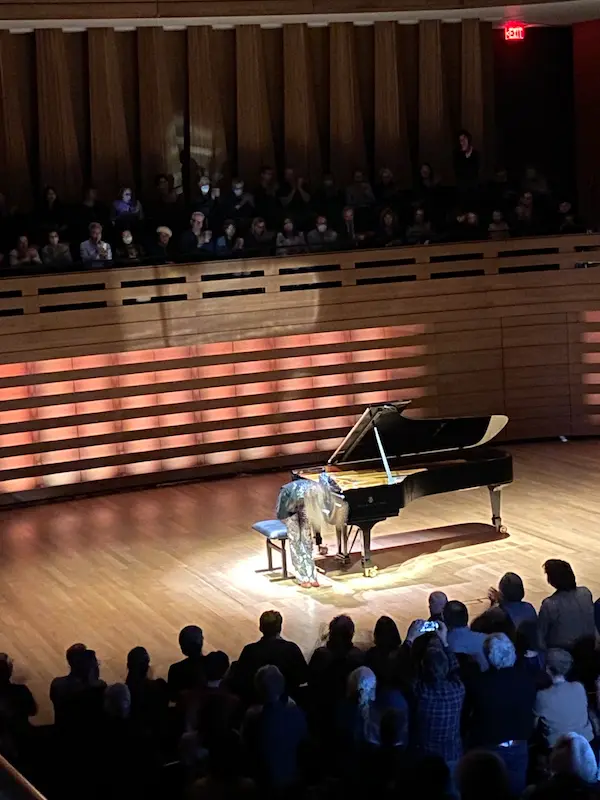
What a captivating experience! Stay tuned for more updates on my musical adventures in Toronto♪
I’ve rambled on, but thank you so much for reading.
This concert was a gift from one of the few friends I can talk about classical music with in Japan, given to me when I left for Toronto. Moreover, the concert itself was wonderful, making it a very special memory.
Since it looks like classical music information in Toronto is not well-organized, I’m eager to gather as much information as possible.
I did some research myself, and it was a bit of a challenge to gather information. If you have any tips or tricks, I’d love to hear them!
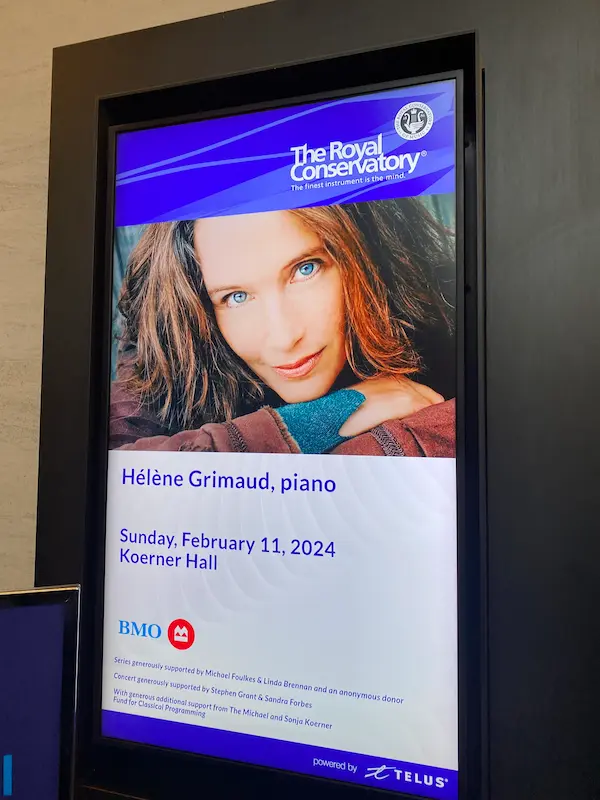



コメント